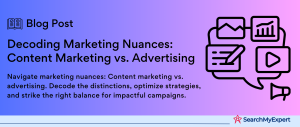Advertising Analytics and Data
Defining Advertising Analytics and Data
Advertising analytics is a multifaceted approach that leverages data to understand and optimize the performance of advertising campaigns. It’s about dissecting data from various advertising platforms to gain insights into audience behavior, campaign effectiveness, and overall ROI. This analytics process taps into a wealth of data sources – from social media interactions to website traffic.
The Digital Age: A Catalyst for Advertising Analytics
In today’s digital world, advertising analytics has become more crucial than ever. With the digital footprint expanding at an unprecedented pace, businesses can no longer afford to ignore the wealth of data available. This analytics provides a microscope to view the vast digital landscape, making sense of trends, patterns, and consumer behaviors that are otherwise invisible to the naked eye.
Types of Advertising Data
- Demographic Data:
Insight into the age, gender, and location of your audience. - Behavioral Data:
Understanding how users interact with your ads and website. - Engagement Data: Measures how audiences are engaging with content.
- Conversion Data: Tracks the actions users take after clicking on ads.
Benefits of Leveraging Advertising Analytics
- Enhanced Targeting:
Pinpoint your audience with incredible accuracy. - ROI Optimization: Allocate budgets more effectively by understanding what works.
- Improved Campaigns: Leverage insights to craft compelling and relevant ads.
- Data-Driven Decisions:
Make informed decisions backed by concrete data.
Data Collection and Management for Advertising Analytics
Methods of Data Collection
- Web Analytics Tools:
Track user interactions on your website. - Social Media Analytics:
Gain insights from social media engagement and ads. - CRM Systems:
Collect data from customer interactions. - Surveys and Feedback Forms: Direct consumer input for qualitative insights.
Challenges in Data Collection and Management
- Volume and Variety:
Managing large volumes of diverse data. - Data Privacy: Navigating the complex landscape of data privacy regulations.
- Integration Issues:
Combining data from various sources for a unified view.
Role of Data Management Platforms (DMPs)
DMPs are like the command centers of advertising analytics. They collect, organize, and activate data from various sources, enabling marketers to target ads more effectively. These platforms are pivotal in managing the vast sea of data, providing a unified view of the customer journey.
Importance of Data Quality and Integrity
Quality and integrity of data are the cornerstones of effective advertising analytics. Without accurate and reliable data, any insights drawn are questionable. Ensuring data quality means better insights, improved decision-making, and, ultimately, more successful advertising campaigns.
Data Analysis and Visualization for Advertising Analytics
Data Analysis Techniques in Advertising Analytics
Advertising analytics isn’t just about collecting data; it’s about making sense of it. Here are some of the techniques used:
- Descriptive Analysis: A look at what happened in past campaigns.
- Predictive Analysis:
Using data to predict future trends. - Prescriptive Analysis: Suggesting actions based on data insights.
- Sentiment Analysis: Gauging public opinion from social media and other sources.
The Power of Data Visualization
Data visualization is the superhero of advertising analytics. It transforms complex data sets into understandable and actionable visuals. With the right visualization, trends and patterns that were once hidden in spreadsheets become crystal clear.
Dashboards and Reports: Your Data Storytellers
Dashboards and reports are the narrators of your data story. They provide a comprehensive and real-time view of your advertising performance, turning data into actionable insights. Think of them as your control panel, giving you the power to make quick, informed decisions.
AI and ML: The Game Changers in Advertising Analytics
Artificial Intelligence (AI) and Machine Learning (ML) are revolutionizing advertising analytics. They bring capabilities like:
- Predictive Targeting:
Anticipating customer needs and behaviors. - Optimization Algorithms: Continuously improving campaign performance.
- Audience Segmentation:
Identifying and targeting specific user groups effectively.
Measuring Advertising Performance with Data
Key Metrics for Measuring Advertising Performance
- Click-Through Rate (CTR):
The percentage of clicks on your ads. - Conversion Rate: How often clicks lead to desired actions.
- Cost Per Acquisition (CPA):
The cost of acquiring a customer. - Return on Advertising Spend (ROAS): The financial return on ad expenditures.
Attribution Modeling: The Backbone of Measurement
Attribution modeling is the process of understanding and assigning credit to the various touchpoints in the customer journey. It’s crucial for determining which parts of your advertising efforts are driving results, and where to allocate your budget.
Types of Attribution Models
- Last-Click Attribution: Credits the last touchpoint before conversion.
- First-Click Attribution: Credits the first interaction.
- Linear Attribution:
Distributes credit evenly across all touchpoints. - Time Decay Attribution: Gives more credit to touchpoints closer to conversion.
Challenges in Measuring Advertising Performance
- Data Silos: Difficulty in integrating data from various sources.
- Evolving Consumer Behavior: Keeping up with how consumer interactions change.
- Attribution Accuracy:
Ensuring the correctness of attribution in a complex digital landscape.
Optimizing Advertising Campaigns with Data
The Role of Data in Campaign Optimization
Data is the compass that guides advertising campaigns towards success. It offers insights that help in fine-tuning campaign strategies, targeting the right audience, and making informed decisions that drive better results.
Data-Driven Optimization Techniques
- Audience Segmentation: Dividing your audience into specific groups for targeted messaging.
- Predictive Analytics:
Anticipating customer behaviors and preferences. - Performance Benchmarking:
Comparing your campaigns against industry standards.
Real-Time Bidding (RTB) in Advertising
Real-Time Bidding (RTB) has transformed digital advertising. It’s a dynamic auction process where ad impressions are bought and sold in real-time, based on data-driven decisions. RTB allows for precise targeting and optimal use of advertising budgets.
The Importance of A/B Testing
A/B testing is the scientist of the advertising world. It involves comparing two versions of an ad to see which performs better. This method is crucial in refining ad elements, from copy to visuals, ensuring that campaigns are as effective as they can be.
Data Privacy and Compliance in Advertising Analytics
The Critical Role of Data Privacy and Compliance
In the realm of advertising analytics, data privacy and compliance are not just legal requirements but also ethical imperatives. They are crucial in maintaining consumer trust and safeguarding personal information.
Understanding GDPR and Other Regulations
The General Data Protection Regulation (GDPR) has set a new standard for data privacy. It governs how personal data of EU citizens is collected, stored, and used, impacting advertising strategies worldwide. Compliance with GDPR and similar regulations is non-negotiable.
Data Anonymization and Pseudonymization
These techniques are vital in maintaining privacy while still deriving value from data. Anonymization removes any identifiable information, while pseudonymization replaces private identifiers with fake identifiers or pseudonyms.
The Need for Transparency and User Consent
Transparency and user consent are the foundations of ethical data collection in advertising. It’s about being open about what data is collected, how it’s used, and ensuring that users have control over their personal information.
The Future of Advertising Analytics and Data
Emerging Trends in Advertising Analytics
The landscape of advertising analytics is constantly evolving, driven by technological advancements and changing consumer behaviors. Here are some key trends shaping the future:
- Increased Focus on AI and Machine Learning:
These technologies are becoming more sophisticated, allowing for deeper insights and more efficient data processing. - Voice and Visual Search Analytics: With the rise of smart speakers and visual search technology, analyzing voice and image data will become crucial.
- Augmented Reality (AR) and Virtual Reality (VR) Analytics:
As AR and VR grow in popularity, understanding consumer interactions in these spaces will be key. - Privacy-First Analytics: In response to increasing data privacy concerns, analytics will shift towards more privacy-centric models.
Big Data and Predictive Analytics in Advertising
Big data and predictive analytics are game-changers in the advertising world. With the vast amount of data available, predictive analytics can forecast trends, consumer behaviors, and potential market shifts, enabling advertisers to be proactive rather than reactive.
- Personalization at Scale:
Big data allows for hyper-personalization in advertising, targeting individuals with tailored messages. - Customer Journey Mapping:
Predictive analytics helps in understanding and anticipating the various touchpoints in a customer’s journey. - Market Forecasting: Analyzing big data sets can predict market trends, helping advertisers to stay ahead of the curve.
Omnichannel Marketing: A Data-Driven Approach
Omnichannel marketing is about creating a seamless customer experience across all channels, whether online or offline. This approach relies heavily on data to understand how consumers interact across different platforms and to provide a consistent, unified brand message.
- Enhanced Customer Experience:
By understanding customer interactions across all channels, businesses can provide a more personalized and cohesive experience. - Consistency in Messaging: Data helps in maintaining a consistent brand message across all channels.
- Improved Data Collection: Omnichannel strategies provide a wealth of data from various touchpoints, offering a more comprehensive view of the customer journey.
Ethical Considerations in Advertising Data
As data becomes more integral to advertising, ethical considerations are increasingly important:
- Consumer Privacy:
Balancing the need for data with respect for consumer privacy is crucial. - Data Accuracy: Ensuring the accuracy of data is important to avoid misleading or biased advertising.
- Transparency and Consent: Being transparent about data collection practices and obtaining consent is vital.
- Bias and Stereotyping:
Avoiding the use of data in ways that reinforce stereotypes or biases is a significant ethical concern.
Conclusion
The future of advertising analytics is a blend of technological advancement and ethical responsibility. As we navigate this dynamic field, the focus will be on harnessing the power of data while respecting consumer privacy and ethical norms. This balance will be key to the continued evolution and success of advertising analytics.
Make a lasting impression with our Advertising Firms.
Table of Contents
Toggle






